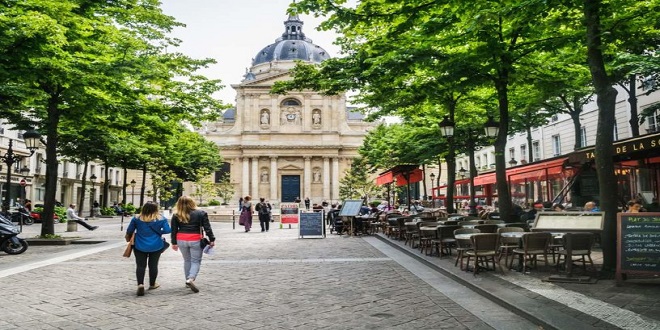Less-Explored Paris

It’s a long way from the plains of Africa, but Paris has its own “Big Five”, and everyone who visits the City of Lights morphs into a modern-day big-game hunter, intent on bagging a glimpse. No trip to the French capital is complete without a safari around the mother of all museums, the Louvre, a gallop down the aisles of the gloriously Gothic Notre-Dame and a pause on the terrace of the sculptured cloud that is Sacré-Cœur.
Gustave Eiffel’s masterpiece of 19th-century engineering, the Eiffel Tower, with its extraordinary views across the city – and down into its magnificent belly – still provokes gasps of disbelief. And the exultant Arc de Triomphe, a monument to military might, is famed for its commanding view of the elm-lined Champs-Elysées and the other avenues that radiate from its base. All this, however, is just the tip of the iceberg.
The city is made up of 20 arrondissements (districts), and many of these are captivating sights in their own right. The Marais, to the east of the center, is as bewitching as the Mona Lisa. Unique boutiques, slick art galleries, gay bars, and Jewish falafel shops line the streets, while regal mansionsturned-museums recall the ancient aristocracy’s penchant for this once-swampy piece of Paris.
The neighboring 10th arrondissement also harbors reminders of industrial Paris, with the imposing railway stations of Gare de l’Est and Gare du Nord, and the meandering Canal St-Martin, the banks of which are now home to cool cafés and quirky shops. As the birthplace of couture, Paris knows a thing or two about shops – the department store was, after all, a French invention. But before these grand retail dames came the dainty passages couverts – glass-covered, iron-columned shopping arcades that still dazzle with their old-world atmosphere and eclectic, occasionally designer, tenants.
Diverse are the city’s many markets, each of which has a distinct personality and flavor, from vast flea markets brimming with glossy antiques and funky bric-a-brac to open-air food markets groaning with seasonal goodies.
PRACTICAL INFORMATION
Getting There and Around Paris is served by two airports: Charles de Gaulle (CDG), 19 miles (30 km) northeast of the city, and Orly, 11 miles (18 km) south of the city. Trains and shuttle buses run from both into the city center.
Where to Eat The city’s restaurants are reason enough to visit. Au Bon Accueil (tel. +33 1 47 05 46 11) dishes up tasty bistro fare and Eiffel Tower views, while Chez Michel (tel. +33 1 44 53 06 20) champions hearty food from the north. The classy Table de Joël Robuchon (www.joel-robuchon.com) serves modern French food with flair
When to Go For lovely weather and shorter lines, visit in spring or fall.
Budget per Day for Two Paris can be very expensive, but if you stay in a mid-range hotel, eat out once a day and take the Métro, expect to spend US$250–350.
THE BUILD-UP
Paris is an urban delight replete with world-renowned museums and art galleries, elegant churches and iconic monuments. Bustling bistros and funky bars line market streets teeming with mismatched stalls. Belle époque, Art Deco, Art Nouveau, high-tech, and shabby-chic – this city has style and substance galore
THE LETDOWN
The snaking lines. Visiting the city in the peak seasons ( Jul–Aug, Christmas and New Year) will test even the most patient of sightseers, so take a tip from the ladies at the guillotine and bring your knitting! Some small shops and restaurants are closed in August when Parisians take time off, and before this, at the end of a long season, staff can get grumpy.
Last word
Roam the city’s serpentine backstreets, bustling bridges, quais, and handsome boulevards and you’ll chance upon the haunts of artists, writers, poets and photographers, dusty bookstores, gossipy bars and cafés, hidden squares and pretty gardens – the lesser-known side of this legendary metropolis





